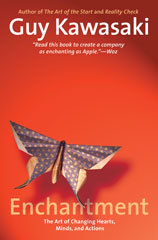By Iveta Cherneva
Published by Amazon Digital Services.
ASIN: B004J4X1AE
This review was first published on CSRwire.com on 25th April 2011
Description
Trafficking for Begging: Old Game, New Name describes an ugly industry; the exploitation of beggars is a form of human trafficking. The book gives a voice to the thousands of victims and uncovers details of this criminal activity. Apart from the legal and social discussion, the study also looks into psychological theories as to why people give money to beggars. The author suggests ideas for public campaign messages that can break the exploitative cycle of trafficking for begging based on these psychological theories. If you liked the movie Slumdog Millionaire, it is likely that you would also be touched by the main message brought by Trafficking for Begging: Old Game, New Name.
Commentary
This is an important book which will not, regrettably, be mainstream reading for anyone in a corporate setting. The subject of trafficking in humans (especially children) for the purpose of begging and profiteering is one of the low sides of our society which prevails around us and which, as responsible citizens, we should be acutely aware of. I am reminded of several trips to India some years ago where it was impossible to move more than a few meters without being approached by a child asking for money. I recall one particular young girl, carrying a disabled baby in her arms, who touched my heart as she begged me to buy powdered milk for her baby brother and took me down several Mumbai alleys to a kiosk selling cans of powdered milk. My colleagues laughed at me when I recounted the story. In my naiveté, I had not imagined that the infant was not actually her brother. I didn't contemplate that she may have another unfortunate child caught into the web of begging, probably "owned" by someone who would profit from the cash after the tin of powdered milk was returned to the kiosk to wait for another unsuspecting business person or tourist.
Iveta Cherneva has published an important work, exposing the intricate operations of begging traffickers in Western Europe, as well as in emerging economies. Yes, even in Geneva, Switzerland, "amidst the wealth and seemingly calm social landscape, an Ugly Industry is quietly sitting on the pavement." Iveta Cherneva says that victims of human trafficking are "part of a ring with organizational complexity comparable to that of a medium-size business enterprise." In Trafficking for Begging, she exposes the factors behind trafficking and the "business" decisions that traffickers make in order to boost profits: "Beggars are forced, abused, beaten and even mutilated by their begging pimps in order to cause more pity. Cut On Purpose. Blinded On Purpose. With broken limbs On Purpose. Without an arm On Purpose."
There are many forms of exploitation and trafficking which for most of us will be simply inconceivable in their cruelty and abuse of human life and human rights. These might include "mail order brides, domestic servitude and nannies, recruitment of child soldiers, illegal adoptions, trafficking for ritual purposes and trafficking of prisoners, camel jockeys, drug smuggling, petty theft, construction and agricultural work, etc." Just reading this list engenders reactions of outrage and great sadness.
Iveta says that "One of the main aims of this book is to suggest an emerging paradigm shift on the international, regional and national level indicating a move away from a purely law enforcement approach to a human rights victims-centered approach. That would hopefully result into a change of mindset in policy making and full-fledged protection and assistance to trafficking victims." In Sweden, for example, this means outlawing the practice of prostitution by punishing the client and protecting the victim. Iveta Cherneva maintains that "by giving money to beggars on the street we only encourage the vicious cycle, which fuels the criminal activity."
Trafficking for Begging is based on the author's observations in Switzerland and much research in international law and domestic legislation from around the world. This self-published book includes some personal stories from begging victims, but it is mainly an intelligent and detailed overview of international legal frameworks that cover trafficking, exploitation and begging in all their forms and a proposal for a policy direction that could assist in curtailing the effects of such difficult issues our society must face.
Whilst this subject might not be directly related to CSR policy in most companies, it is certainly related to sustainability and the creation of a just and equitable society for all. How many corporations use their funds and influence to fight this type of crime against humanity in the same way as they poor funds into education, health and other more "acceptable" social needs? The Body Shop, always a company to champion a less popular cause, has made anti-trafficking a flagship program, and there may be others. Perhaps Iveta Cherneva's book may spark more initiatives, especially for companies who operate in regions of high-risk for begging trafficking, which, it seems, can be just about anywhere. In any event, reading Trafficking for Begging is a sobering experience and Iveta Cherneva earns my admiration for skillfully bringing this subject onto the radar.


